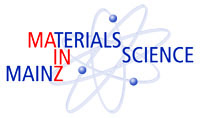


Physikalisches Kolloquium
May 17, 2016 at
4:16 p.m. c.t.
in
HS KPH
Prof. Dr. Alfons Weber
Institut für Physik
a.weber@uni-mainz.de
Prof. Dr. Hartmut Wittig
Institut für Kernphysik
hartmut.wittig@uni-mainz.de
Colliding neutron stars as sources of gravitational waves
Dr. Andreas Bauswein (Heidelberg Institute for Theoretical Studies)
Neutron stars are the compact remnants of massive stars, which explode as supernovae. While the outer layers of the progenitor star are disrupted during the explosion, the inner core collapses under its own weight and forms an very dense neutron star or a black hole. Many stars exist in double systems with the components orbiting around each other.
Consequently, two supernova explosions may lead to a neutron star binary or a black hole binary.
Orbiting binaries of neutron stars or black holes emit gravitational waves, which extract energy from the system. The loss of energy leads to a continuous decay of the orbital separation. Finally, the merging of the binary components is inevitable. Prior to and during merging the gravitational-wave emission becomes strongest, and thus mergers of compact object binaries are the primary targets of existing and upcoming gravitational-wave detectors.
Recently, a black-hole binary merger was observed by Advanced LIGO.
Colliding neutron stars are expected to be detected in the near future as well when the sensitivity of gravitational-wave instruments increases. The detection of neutron-star mergers promises fascinating insights beyond gravitational physics and astrophysics. For instance, the dynamics of the merging is affected by the properties of very dense neutron-star matter.
Therefore, details of the gravitational-wave signal will reveal properties of high-density matter, which are hardly accessible by laboratory experiments. Observing neutron-star mergers will thus complement our knowledge about fundamental constituents of matter and strong interactions.
Moreover, the extreme conditions during a merger provide favorable conditions for creating heavy elements beyond the iron group such as gold, platinum and uranium. The astrophysical production sites of these elements are still unsettled. The nucleosynthetic processes during a merger are expected to power electromagnetic counterparts, which may be found by systematic sky surveys. These observations in combinations with the associated gravitational-wave signals will be essential for clarifying the origin of heavy elements.